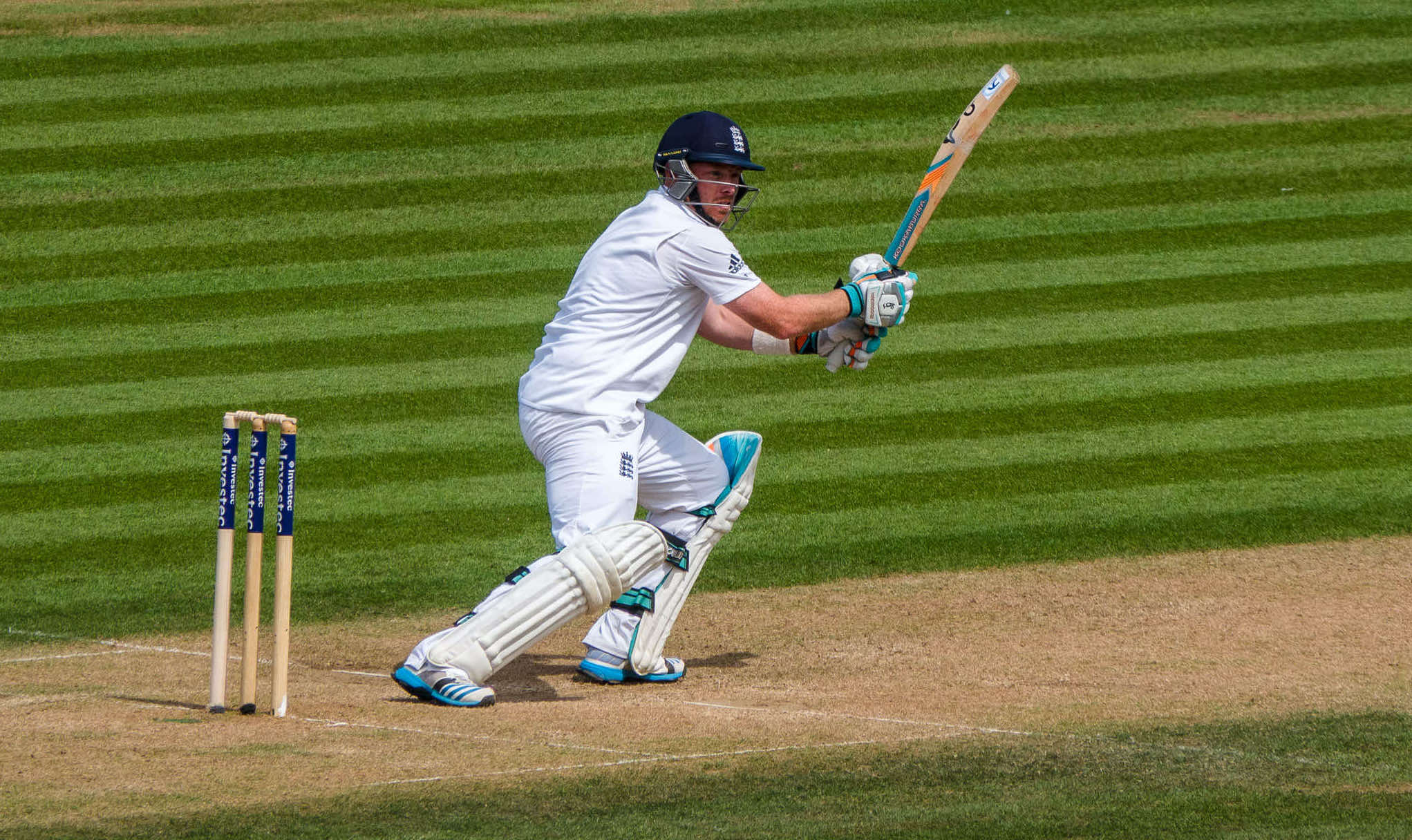The former England batsman Ian Bell has announced his retirement from first-class cricket at the end of this slightly unreal 2020 season; (not that we should complain – we should be grateful that there was any cricket at all). Bell missed the entire 2019 season with injury so nobody will have watched him “live” for a while.
Bell will be remembered with affection, respect and a tinge of disappointment. Affection, because he looked so good. Bell’s off side stroke play was as sublime as that of anyone in the modern era. His Test record – 7,727 runs at an average of 42 with 22 centuries – is, well, respectable. His greatest achievement came in the 2013 Ashes, which England won three-nil, when he scored 562 runs at 62.44 and made three centuries, each contributing to an England victory.
He earned a sort of cricketing immortality by being one of the eleven – twelve if you count Paul Collingwood, who replaced Simon Jones for the final Test – who beat Australia in 2005. This was one of the greatest of all Test series, better than 2019: notwithstanding the heroics of Steve Smith and Ben Stokes, and better than 1981. He made two half-centuries in the enthralling draw at Old Trafford. He bagged a pair in the final Test at The Oval. There were times in that series when Shane Warne v Ian Bell really did seem like men against boys. Of course that was right at the start of Bell’s career; indeed, his retirement marks the end of the link between 2005 and the current game.
It took a while for Bell to seem genuinely comfortable at the highest level. When he made runs it was usually in the wake of someone else making them first. There was a sense in which Bell, rather like his Australian contemporary Michael Clarke, was almost a manufactured cricketer. Spotted early each spent his developing years “in the system”; whatever happened, they weren’t going to be dropped. Like Clarke, Bell proved himself. He made runs all over the world. 42 really is not bad: but shouldn’t it have been better?
Bell made 20,000 runs in first-class cricket and spent his entire county career with Warwickshire, for whom he made his debut in 1999. A friend wrote to say wasn’t it unusual these days for a player to spend such a long career with one county? The answer seems to be, well, sort of.
It is obvious that cricketers have become much more mobile over the years. Historically it was very unusual for players to change counties. The young Surrey leg-spinner Freddie Brown toured Australia on the Bodyline tour of 1932-33; when he next went there, as skipper in 1950-51, he was the captain of Northamptonshire. Raman Subba Row trod a similar path, from Surrey to Northamptonshire. M J K Smith moved from Leicestershire to Warwickshire, Roger Prideaux from Kent to Northamptonshire (and then Sussex) and Peter Richardson from Worcestershire to Kent.
They all had something in common. They were amateurs. The structure of the professional game, almost feudal in nature, made it more difficult for professional cricketers to move. (Jack Hobbs, Philip Mead, and Walter Hammond, three of the greatest English cricketers, each had to qualify by residence to play for a county which was not the county of his birth.) When Tom Graveney, disgruntled at having the captaincy taken away from him and given to an amateur, opted to leave Gloucestershire and join Worcestershire, he was forced to sit out the entire 1961 season before he could start with his new club.
Even so, of the MCC touring party that went to Australia and New Zealand under Peter May in 1958-59, eight were at some stage to change counties. These included Subba Row, Richardson and Graveney. The others were, first, Willie Watson, the Yorkshireman who moved to Leicestershire in 1958 and Tony Lock who left Surrey to go to Western Australia in 1963 and then returned to lead Leicestershire in 1965 and briefly revived his England career. Lastly there were three players whose Test careers were well and truly over by the time they moved counties: Jim Laker, who left Surrey in 1959 and joined Essex in 1962, Roy Swetman, who played for Surrey from 1954 to 1961, when he played all his eleven Tests, Nottinghamshire in 1966 and 1967, and Gloucestershire from 1972 to 1974, and finally Fred Trueman than whom there could have been no truer son of York, but who played a few one-day games for Derbyshire after his retirement in 1968.
Everything changed in the 1970s. There was a big hoo-hah when Bob Willis and Bob Cottam left Surrey and Hampshire for Warwickshire and Northamptonshire respectively in 1971 but after that it was liberty hall. By the time Mike Gatting’s team won The Ashes in 1986-87, England had two opening batsmen (Chris Broad and Bill Athey) and two leading bowlers (Botham and Graham Dilley) who were on their second counties. When Leicestershire won the county championship in 1976, they had no homegrown players at all. A lot of pros had gone there from other counties including three from Yorkshire, captain Ray Illingworth, Jack Birkenshaw and Chris Balderstone. Two trends that no longer exist were demonstrated here. One is the Yorkshire diaspora. Yorkshiremen used to find their way into the other counties after struggling to establish themselves at home. Dickie Bird and Brian Bolus were early examples. Secondly, smaller counties would recruit from bigger ones That still happens up to a point but only when a player is really near the end of his career, like Michael Carberry, who had already played for three counties, moving from Hampshire to Leicestershire, rather unhappily as it turned out. Now it’s often the other way round. The money in the game, hardly massive in the domestic game, makes it difficult for the smaller counties to hold on to their most promising players.
It has always been the case that the very best tend not to move. Ian Botham and David Gower both changed counties, but it was after their greatest work had been done. Of the outstanding side that won the 2005 Ashes, only Kevin Pietersen – always a man apart – had moved counties (Matthew Hoggard and Geraint Jones were to do so after their England careers were over). Of the 2019 World Cup winners, only Jos Buttler and Liam Plunkett have moved.
Obviously central contracts have made a difference. Joe Root only plays a handful of games for Yorkshire. It makes no sense for another county to offer him a contract so he can play a handful of games for them. His brother Billy, on the other hand, a goodish county player, has moved from Nottinghamshire to Glamorgan.
The market, insofar as there is one, is at its busiest in respect of top players who are on the verge of the England side but not quite good enough to establish a permanent presence there; hence the recent rumours about the Overton brothers leaving Somerset. Sometimes a move seems to provoke interest from the national selectors, as with James Taylor and Dominic Sibley (though in his case surely Surrey are no less “influential” than Warwickshire. On other occasions it seems to make no difference, as with Sam Northeast’s move from Kent to Hampshire. Joe Denly has played for three counties; his now quite lengthy international career has only succeeded in establishing that he is not quite “there”.
You could probably select two very good “Best England Elevens of the 21st Century” from players who have represented only one county. Choosing one from those who have represented more than one county is more challenging. Here we go:
K K Jennings, N V Knight , M R Ramprakash, K P Pietersen, J P Crawley, J W A Taylor, J C Buttler, L E Plunkett, G P Swann, S C J Broad, R J Sidebottom
Bill Ricquier
Featured Image: Ian Bell steers through the off side. England v India, 3rd Investec Test Match, Day 2; Ageas Bowl, Southampton. Copyright Mike Prince (CC BY-SA 2.0).





1 comment
Malcolm Merry
Don’t think style like Bell’s can be manufactured. The best that Warks has ever produced but, yes, slightly short of expectations.